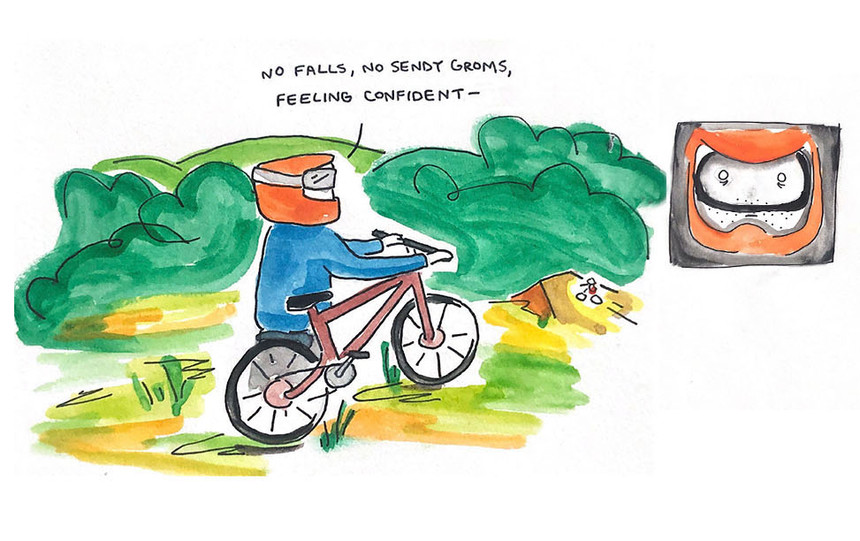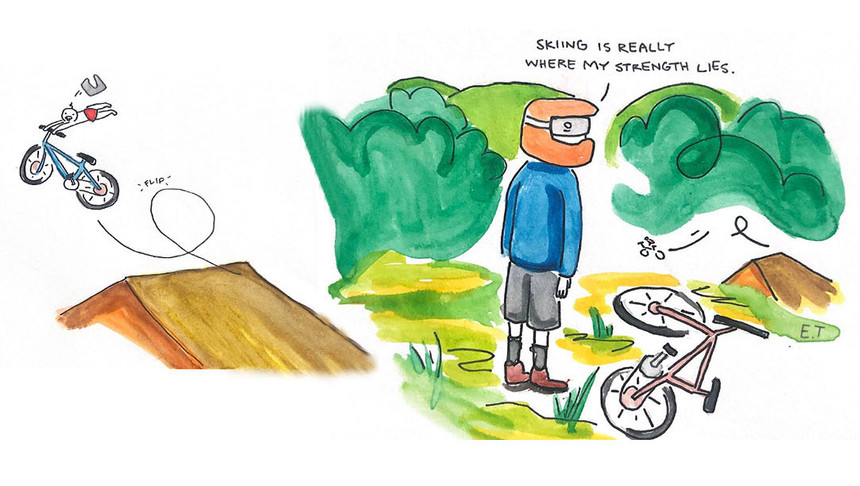
Why Every Rider Needs to Take A Mountain Bike Class
Story by Max RitterFor most mountain bikers, there’s a powerful driving force behind why we ride. Sure, it’s about connecting with friends, getting out into the woods for some fresh air, or getting in a quick burn after work. But let’s be real, on top of all of those factors, the simple power of progression is what keeps us out there day after day, seeing what we can learn next on our bikes. For everyone who’s ever ridden on two wheels, though, there comes a time when we get stuck. Whether it’s a feature we just can’t wrap our head around, speed that we can’t seem to find, or a type of riding we’d like to get into but are too scared to just go try, there’s a simple solution. Seek help!
Okay, so you don’t actually need to go find medical attention, but a mountain bike coach can and will certainly help you’re riding! I’ve been riding mountain bikes for nearly a decade now, but I had never taken an actual skills class until just a few weeks ago – and it’s changed my riding in more ways than I could have ever imagined.

Emmet Towey art.
The impetus to take a class started with watching my girlfriend’s mom progress her mountain biking at an insanely fast rate over the last few years. We would ride together every few months, and every time I would have my mind blown by what she had learned since we last rode. After hitting a big drop, rolling a big scary rock roll, or clearing jumps at speed, she would always ride off with a smug look on her face and state “that was a skill I BOUGHT!” Well, turns out that throwing money at mountain biking doesn’t just mean bolting nicer components to your bike; spending some dollars on some proper skills coaching might go a much longer way. So, I listened to her, and joined her at Duthie Hill MTB Park outside Seattle for one of Fluidride’s Trail Essentials classes taught by ex-world cup DH racer Simon Lawton.
For many intermediate to advanced riders, riding mountain bikes was probably something we taught ourselves, picking a few skills up from friends while riding together, or maybe watching a few YouTube videos of the pros doing cool stuff. Riding a bike on flat, even ground is intuitive, but transferring those skills to riding off-road at high speeds will likely trigger an instinctual reaction of “oh f*** what should I do?” As we spent time processing these sensations, our brains became accustomed to them and we learned to adapt, learning how to move our bikes and control our bodies in an ever-growing variety of terrain. Trial and error are a great way to learn, and depending on your comfort level with crashing, can lead to some pretty good riding skills. It does, however, leave a lot of room for us to develop bad habits that will impede us in our further progression. That’s exactly where a class like Trail Essentials comes to the rescue. Designed around learning the “language” of mountain bike skills, there’s probably plenty in a class like this that you might already be doing. However, putting words to and actively thinking about these things while riding will help you immediately in surprising ways. Besides, no matter how good we are, we all have bad habits to break.
We started the class off with a footwork cornering drill through some cones, thinking about crank and foot position and how it can help you control the bike’s trajectory without using your brakes. Within minutes, this simple drill had me developing newfound confidence in corners – particularly with front footed turns, where it turns out I had been improperly weighting my front foot for the past 10 years. We took those skills to an actual trail, and it felt like my brain had been completely re-wired when it came to riding corners. They now felt smooth, effortlessly, and I found myself gaining untold amounts of speed down a nearly flat section of trail.

Emmet Towey art.
The second drill we worked through was a primer in how body position on the bike will affect speed through rough and chunky sections of trail. Moving over to one of Duthie’s many pumptracks, Lawton had me see how fast I could go through a straight section of tightly spaced rollers. I pedaled hard into it, and instinctively tried to pump my bike to try and gain speed. I thought I was going fast, but Lawton just chuckled and said, “watch me.” He pedaled even harder into the same section, and then stood up taller on his pedals, drove his knees slightly forward, brought his eyes up high, and relaxed to let the bike absorb and move freely over the rollers. He didn’t lose an ounce of speed as his upper body stayed perfectly neutral, seemingly floating through space. He shared his secret: stay loose and don’t try to fight the movement of the bike – you already have the speed, so pumping through terrain like this to try to get more will only work against you, tire you out and slow you down. I gave the pumptrack another go with Lawton standing at the far end with a visual clue to keep my eyes up and relax, and BOOM! Like magic, I dropped a few seconds off my time.
Developing skills in a structured setting doesn’t need to be all about speed. In fact, most of the drills we practiced focused on techniques that will open all kinds of doors and break down all kinds of physical and mental barriers with simple adjustments. If nothing else, learning the proper technique will simply build your confidence on any bike ride, which I will guarantee will make it much more fun. Fluidride offers all manner of skills courses beyond their intro-level Trail Essentials class, including include drop skills, riding steeps, cornering, and even working on advanced air techniques like learning tricks. However, it all comes down to building a fundamental system of how our body interacts with our bike. In fact, Lawton tells me his most basic class is one all manner of high-level racers and freeride athletes come back and work on every season with him. In other words, you’re never too good to learn more, so why not learn it the right way?
